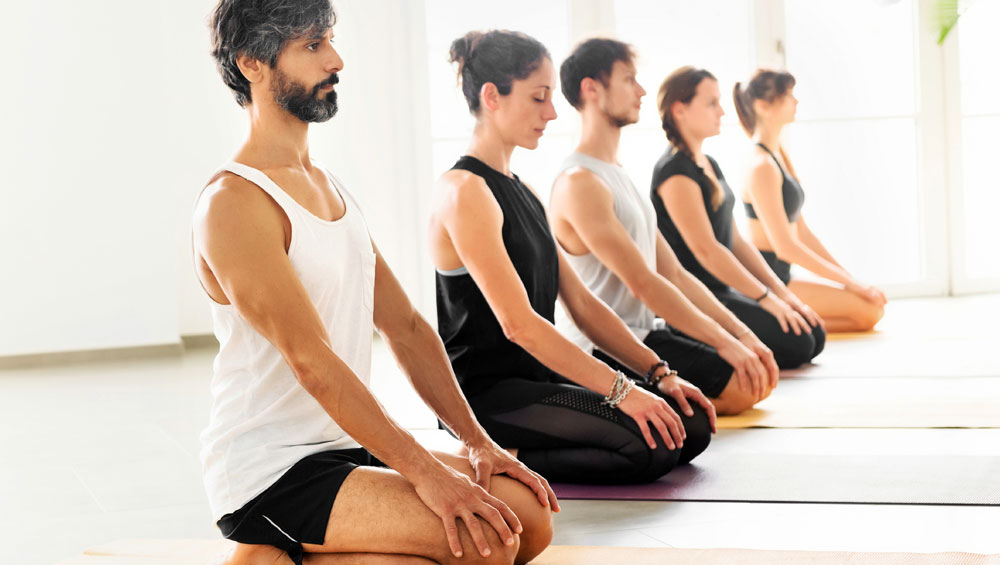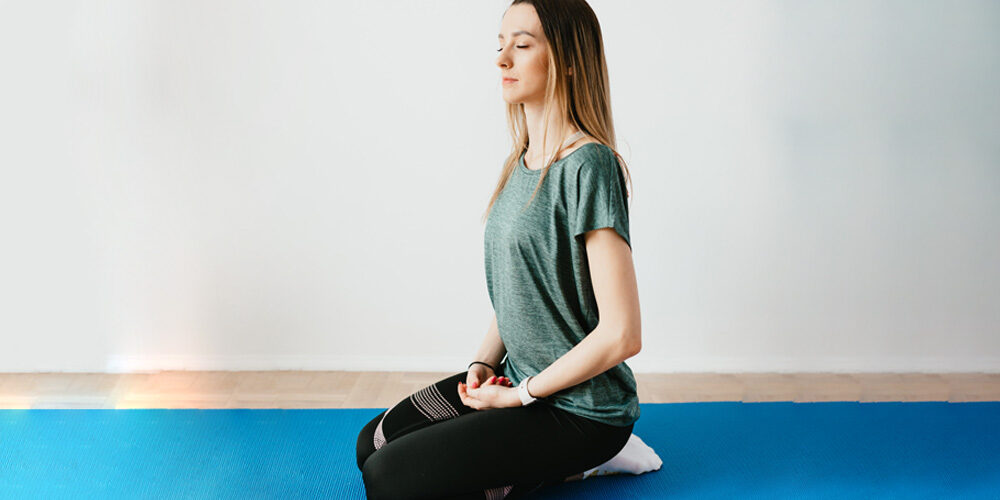No products in the cart.
All You Need To Know About Virasana And Its Benefits
Virasana is a Sanskrit word made up of the words Vira, which means “hero,” and asana, which means “yoga pose.” As a result, it’s also known as the Hero’s Pose. The name Virasana is pronounced ‘veer-AHS-anna.’ This is a basic yoga pose that can also be used for meditative purposes. Many people can’t sit in Vajrasana, Padmasana, or Sukhasasana for meditative or other yoga sessions; in that case, Virasana can be used as a substitute for the mentioned yoga poses for meditative or other yoga sessions because Hero’s yoga pose provides a larger area of contact with the ground. Sitting in Virasana represents victory over thoughts, desires, and inner turmoil, and it is this victory that makes us heroes. Yes, if you sit properly in this posture, it becomes very easy to focus the mind, and you can feel your inner hero for a short time.
One of the most ancient and traditional asanas for pranayama and meditation is Virasana. It is described in Yogic texts such as Vyasa’s Commentary on Patanjali’s Yoga Sutras, BKS Iyengar’s Light on Yoga, and Ashtanga Vinayasa Yoga.
In Lotus Pose or Siddhasana, however, chanting or mantra is preferred. If you are unable to sit in this yoga posture for an extended period of time, you can substitute Virasana or Vajrasana. This is the only yoga asana that can be done after a meal, aside from Vajrasana, because it stimulates the digestive system.
How to do virasana?

- Kneel down on the ground. Knees should be hip-width apart and thighs parallel. Press all ten toes into the floor to engage your feet and calves.
- Bring your brow to the floor and place your hands behind your knees on your calves. To flatten your calves evenly, press your fingers into them with a steady pressure and slide your hands toward your ankles.
- Bring your buttocks to the floor and place your hands, palms down, on your thighs. From the core of your pelvis to the crown of your head, lower your sit bones and lengthen. Keep your spine in a natural curve. Your ankles should be on the sides of your hips. Keep your toes pressed into the floor and your ankles clasped in toward your hips.
- Maintain this posture for 60 seconds or as long as your meditation or pranayama session lasts. Press your palms firmly into the floor and lift your buttocks to release the pose. In Dandasana, cross your ankles and shins under your body before extending your legs straight out in front of you (Staff Pose).
Sitting on a folded blanket or block is the safest way to practice Virasana, especially at first. To avoid injury, this ensures that your knees and thighs are properly aligned. When you’re in the Hero Pose, you shouldn’t have any knee pain. Stop if you feel any pain in your hip and add some height to support it.
Hero Pose props and alterations: –
Because this is such a deep stretch for your knees, it’s important to go slowly, use support if needed, and make any adjustments necessary to feel stable, secure, and supported in the pose. To find the variation of the pose that works best for you, try these simple props and modifications:
- When your buttocks aren’t reaching down, sit on top of a block or thick folded towel to raise the level of your buttocks’ bottom. Ensure that the seating bones are distributed evenly across the block or raised surface.
- The tightness of your biceps femoris muscles causes pain in your knee joint. Place a thin, tightly rolled blanket behind the knees and sit on a block under the buttocks to help with posture in this position.

- If your ankles are overstretched — Place a rolled-up yoga blanket in front of your ankles in this position so that only your toes are lightly pressed into the mat.
- Experiment with various support heights to find the best fit for you. Place a rolled-up towel or blanket under each ankle before fully assuming the posture if it requires additional padding.
- You can bring your hands into the correct position instead of placing them on your thighs if you’re doing the pose as part of your meditation.
- Extend the arms forward until they are parallel to the floor, palms facing forward, to add a torso stretch to the pose. Make a thumb hook. Then, on an inhale, raise your arms overhead, perpendicular to the floor, palms facing forward. Exhale to lower and release your arms. Rep with a different thumb hook.
Also Read: Understanding and Relieving Back Pain
Health benefits of virasana: –
- Meditation: It can be used as a meditative yoga pose. It promotes physical and mental balance, as do all meditative yoga poses.
- Strengthens the legs: This yoga pose will strengthen your thighs, knees, and ankles.
- Helps to eliminate lethargy: Practicing the yoga pose can help you become more active and energetic.
- Prevent excessive sleeping: This yoga pose should be practiced by anyone who is prone to sleeping excessively.

- Strength and vigor: Yoga pose practice provides you with strength, vigor, courage, fortitude, and power.
- Aids in the release of gas: The yoga pose aids in the improvement of digestion, the release of unwanted gases, and the relief of constipation.
- Menopause symptoms: Practicing the yoga pose can help to alleviate menopause symptoms.
- Reduce leg swelling: Practicing the yoga pose during pregnancy helps to reduce leg swelling.
Virasana precautions: –
The following are some of the virasana precautions and contraindications:
- The asana should not be performed if you have a knee injury. The pose is a comfortable sitting posture for meditation or pranayama, but it puts a lot of strain on the knees and ankles while sitting, so it can be dangerous if one’s knees and ankles are stiff or if one’s legs are too long. Knee and ankle injuries. If you have an ankle or knee injury, seek advice from a qualified yoga teacher or instructor before attempting this pose.
- It should also be avoided if you have problems with your ankles or hips.
- Virasana, or Hero Pose, should be avoided if you have heart problems or a headache.


